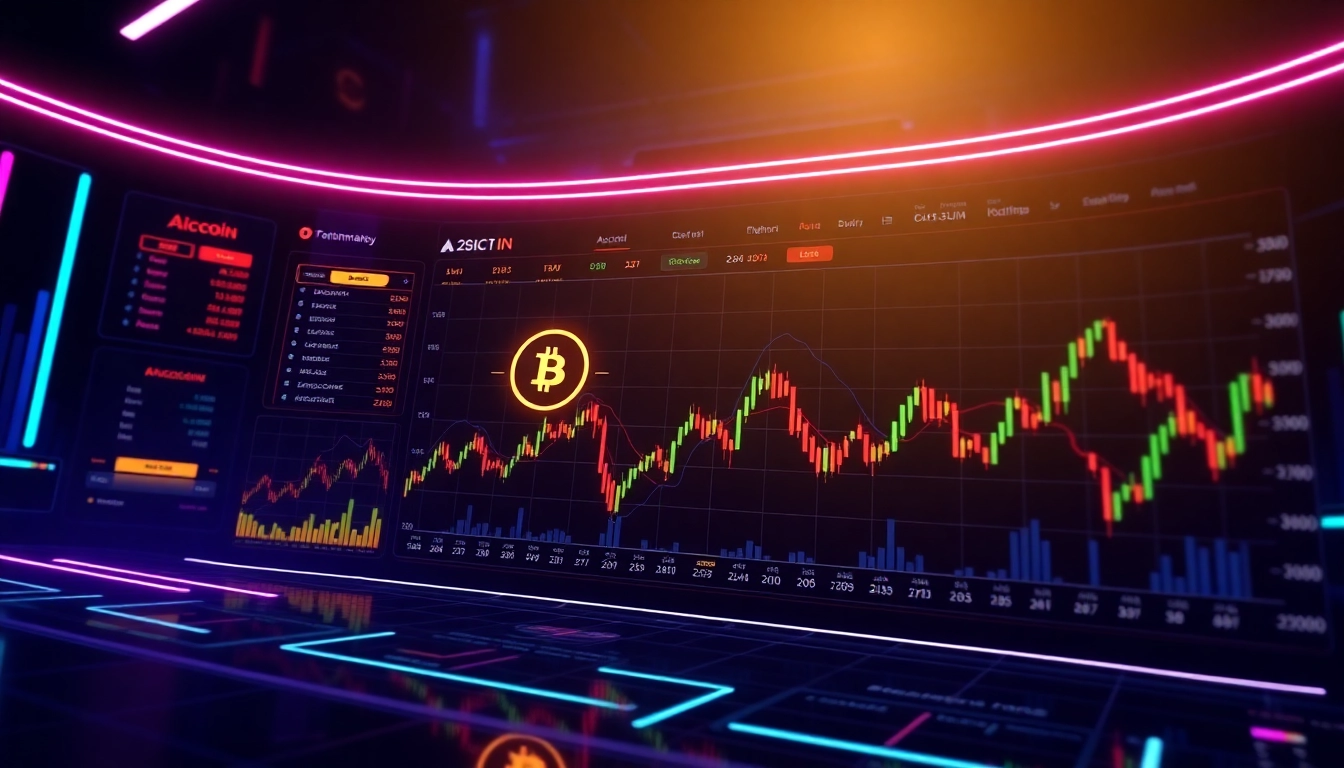Introduction to Trading View and Its Role in Modern Trading
In the fast-paced world of financial markets, traders and investors require robust tools that can keep up with the dynamic nature of asset prices, market sentiment, and breaking news. Among the most influential platforms that have emerged to meet these demands is trading view. This platform has revolutionized how participants analyze markets, share insights, and execute trades, making it an essential resource for both beginners and seasoned professionals.
TradingView operates as a comprehensive financial analysis platform, combining advanced charting capabilities, real-time data, social networking features, and automation tools. Its versatility spans various asset classes including stocks, cryptocurrencies, forex, commodities, and indices, providing users with a holistic view of global markets. This article delves deep into the features, strategic usage, and future prospects of TradingView, equipping traders with the knowledge necessary for successful integration into their trading routines.
Getting Started with Trading View: Account Setup and Basic Tools
Creating an Account and Navigating the Dashboard
To maximize the benefits of TradingView, users must first create a free or premium account. The registration process is straightforward—simply provide an email address and create a password. Upon logging in, users are greeted with a customizable dashboard that aggregates market data, recent ideas, preferred assets, and notifications.
The dashboard serves as the central hub for accessing various features, including charts, screens, alerts, and community discussions. Its intuitive interface allows users to quickly switch between different asset markets, customize layouts, and monitor multiple instruments simultaneously. Advanced users can configure their workspace to prioritize specific tools, making the interface adaptable to diverse trading styles.
Understanding Charting Tools and Indicators
At the core of TradingView’s functionality are its powerful charting tools. Users can select from a wide array of chart types such as line, bar, candlestick, and Heikin-Ashi, each offering unique advantages for different analysis techniques. The platform supports real-time data updates, enabling traders to observe market movements as they unfold.
Indicators play a vital role in technical analysis. TradingView provides an extensive library, including Moving Averages, RSI, MACD, Bollinger Bands, Fibonacci Retracements, and more. Users can combine multiple indicators, customize parameters, and even create custom scripts using Pine Script—a proprietary programming language that allows for bespoke strategy development. This flexibility ensures traders can tailor their analysis to align with their unique trading hypotheses.
Customizing Watchlists and Alerts for Efficient Trading
Efficiency in trading often hinges on timely notifications and organized asset tracking. TradingView allows users to create personalized watchlists comprising assets of interest, facilitating quick access and monitoring. Watchlists can be grouped based on asset class, trading strategy, or market sector.
Alerts are crucial for reacting swiftly to market changes. Traders can set price alerts, indicator-based triggers, or news notifications that activate when specific conditions are met. These alerts can be delivered via email, SMS, or in-app notifications, ensuring traders stay informed even when away from their charts. Proper use of watchlists and alerts enhances responsiveness and reduces missed opportunities.
Advanced Trading View Strategies for Maximal Performance
Utilizing Technical Analysis and Pattern Recognition
Advanced traders leverage TradingView’s robust charting tools to identify trading opportunities through technical analysis. Recognizing patterns such as head and shoulders, double tops/bottoms, flags, and pennants allows traders to anticipate potential reversals or continuations. Moreover, the platform’s drawing tools enable precise annotation, fostering clarity and effective decision-making.
Automated pattern recognition tools and custom scripts can further assist in detecting complex setups. Combining multiple technical signals—volume, momentum, and trend indicators—enhances the probability of successful trades. Backtesting these strategies on historical data provides insights into their durability and profitability over time.
Leveraging Social Trading and Community Insights
One of TradingView’s distinguishing strengths is its active community of traders worldwide. Users share trade ideas, technical analyses, and market forecasts, creating a collaborative environment. Engaging with community insights can provide alternative perspectives, validate strategies, or spark new trading ideas.
Following top analysts, commenting on ideas, and participating in discussions can deepen market understanding and foster collective learning. The platform also offers social features such as chat groups and trending ideas, making it a dynamic marketplace of information and expertise.
Automating Trades and Backtesting Strategies
Automation has become increasingly vital in modern trading. TradingView supports automation through webhook alerts integrated with third-party trading bots or APIs. Traders can set predefined conditions that trigger automated executions, reducing emotional biases and improving execution speed.
Backtesting allows traders to simulate how their strategies would have performed historically. By applying their rules to past data, they can refine parameters, eliminate weaknesses, and enhance overall performance. Combining backtesting with forward testing in paper trading environments enables comprehensive strategy validation before risking real capital.
Optimizing Your Trading View Experience for Better Results
Integrating Third-Party Tools and API Access
For traders seeking additional functionality, TradingView offers API access and integrations with other software platforms. This enables seamless data sharing, custom dashboard creation, and integration with trading terminals such as MetaTrader or NinjaTrader. Connecting these tools extends the platform’s capabilities, allowing for more sophisticated trading systems.
Tracking Multiple Markets and Asset Classes
Diversification is essential for balanced portfolios. TradingView’s multi-market tracking capabilities allow users to monitor stocks, forex pairs, cryptocurrencies, commodities, and indices simultaneously. Advanced watchlist management and multi-pane layouts streamline this process, enabling traders to oversee complex positions effectively.
Analyzing Performance Metrics and Improving Strategies
Performance analytics help traders evaluate their effectiveness. TradingView provides detailed metrics such as win rate, risk-reward ratio, and drawdown analysis. Regular review of these indicators supports continuous improvement, allowing traders to adapt strategies in response to changing market dynamics and personal performance feedback.
Future Trends and Updates in Trading View Technology
Emerging Features and Upcoming Enhancements
As technology advances, TradingView continuously introduces new features, such as improved charting tools, enhanced mobile experiences, and expanded asset coverage. Upcoming updates aim to simplify workflows, introduce more customizable options, and integrate AI-driven analysis to bolster traders’ decision-making processes.
The Impact of AI and Machine Learning on Trading Platforms
Artificial Intelligence and Machine Learning are transforming trading platforms by enabling predictive analytics, sentiment analysis, and automated strategy generation. TradingView’s integration of these technologies could lead to smarter alerts, adaptive indicators, and more sophisticated trading bots, providing traders with a competitive edge.
Staying Ahead with Continuous Learning and Community Engagement
The fast-evolving nature of financial markets necessitates ongoing education. Participating in webinars, workshops, and community discussions within TradingView helps traders stay informed about the latest tools, techniques, and market trends. Leveraging the platform’s social aspects ensures traders remain engaged and adaptable in a changing landscape.



